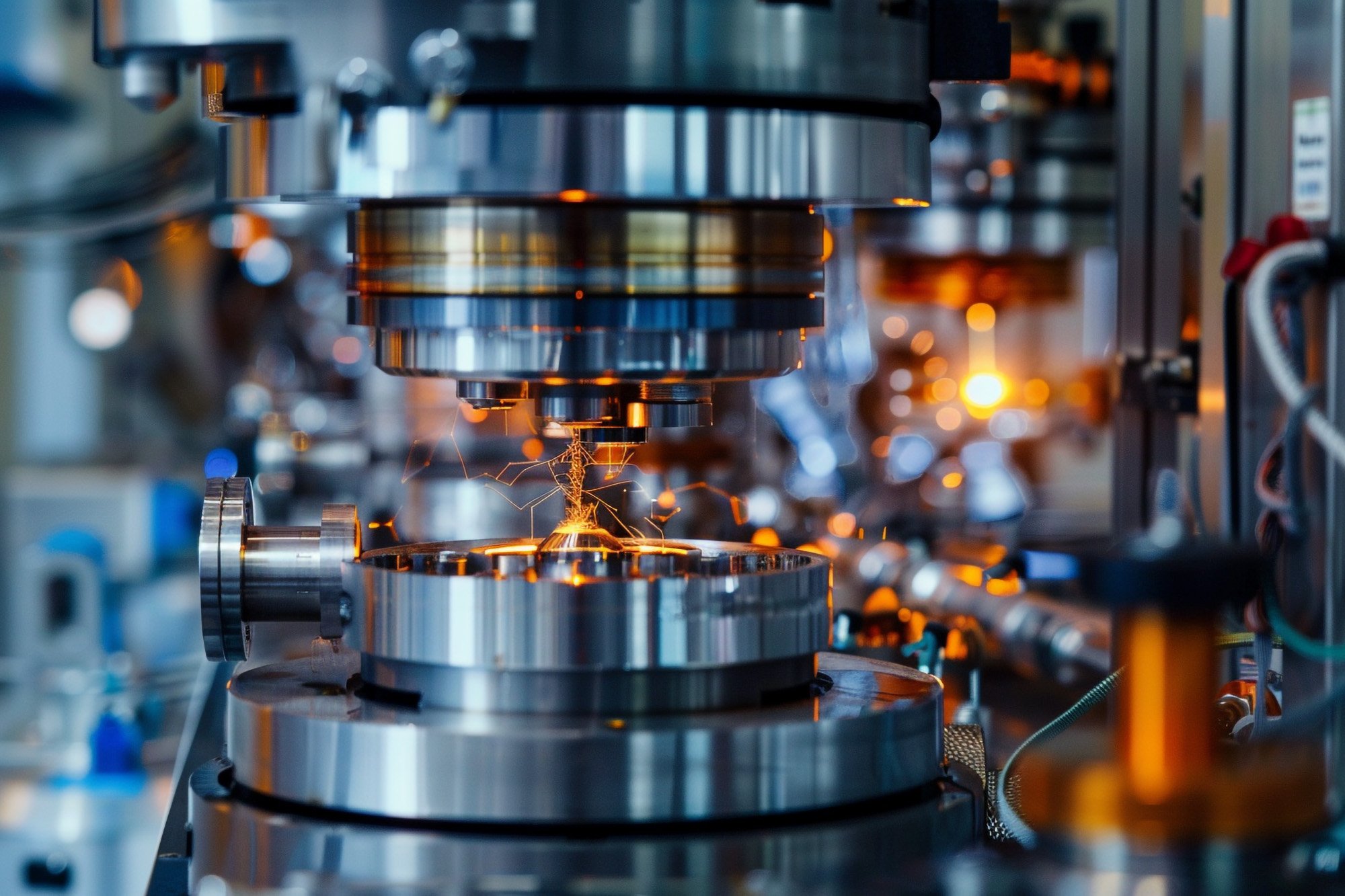NUS scientists have created a new method for producing quantum materials at the atomic level using artificial intelligence, providing a significant advance in the control and production of these materials for research and practical applications. This method, which incorporates the CARP concept, demonstrates the potential of artificial intelligence to revolutionize atomic manufacturing and quantum materials research. (Artist’s concept). Credit: Issues.fr.com
Researchers from the National University of Singapore (NUS) have developed an innovative method to create carbon-based quantum materials atom per atom. This method combines the use of scanning probe microscopy with advanced deep neural networks. This achievement highlights the capabilities of artificial intelligence (AI) to manipulate materials at the sub-angstrom level, providing significant benefits for basic science and potential future uses.
Open-shell magnetic nanographenes represent a technologically attractive class of new carbon-based quantum materials, which contain robust π spin centers and non-trivial collective quantum magnetism. These properties are crucial for the development of fast electronic devices at the molecular level and the creation of quantum bits, the building blocks of quantum computers.
Despite significant progress in the synthesis of these materials via surface synthesis, a type of solid-phase chemical reaction, the precise fabrication and tuning of properties of these quantum materials at the atomic level remains a challenge.

The image illustrates an intuitive atomic robotic probe that would enable chemists to precisely manufacture organic quantum materials at the single-molecule level. The robotic probe can perform real-time autonomous reactions on a single molecule with chemical bond selectivity, demonstrating the production of quantum materials with a high level of control. Credit: Nature Synthesis
CARP concept
The research team, led by Associate Professor Lu Jiong from the NUS Department of Chemistry and the Institute for Functional Smart Materials, together with Associate Professor Zhang Chun from the NUS Department of Physics, presented the concept of the Chemist’s Intuitive Atomic Robotics (CARP) probe. ) by integrating the knowledge of probe chemistry and artificial intelligence for the fabrication and characterization of open-shell magnetic nanographenes at the single molecule level. This allows precise engineering of their π-electron topology and spin configurations in an automated manner, mirroring the capabilities of human chemists.

Demonstration of a robotic atomic probe powered by artificial intelligence and intuitive chemists. Credit: Nature Synthesis
The CARP concept uses deep neural networks trained using the experience and knowledge of surface science chemists, for the autonomous synthesis of open-shell magnetic nanographenes. It can also extract chemical information from an experimental training database, providing insight into unknown mechanisms. This represents an essential complement to theoretical simulations, contributing to a more complete understanding of the chemical reaction mechanisms of the probes. The research work is a collaboration involving Associate Professor Wang Xiaonan from Tsinghua University in China.
Publication and potential
The results of the research were recently published in the journal Natural Synthesis.
The researchers tested the CARP concept on a complex on-site selective cyclodehydrogenation reaction used to produce chemical compounds with specific structural and electronic properties. The results show that the CARP framework can effectively take the specialized knowledge of scientists and turn it into machine-understandable tasks, mimicking the workflow for performing single-molecule reactions that can manipulate the geometric shape and rotational characteristics of the assembled final chemical.
Furthermore, the research team aims to exploit the full potential of AI capabilities by extracting hidden information from the database. They established an intelligent learning paradigm using a game-theoretic approach to examine frame learning outcomes. The analysis shows that CARP effectively captured important details that might have been missed by humans, especially when it came to the successful completion of the cyclodehydrogenation reaction. This suggests that the CARP framework could be a valuable tool for gaining additional insights into the mechanisms of unexplored single-molecule reactions.
Prof. Lu said: “Our main goal is to work at the atomic level to create, study and control these quantum materials. We are working to revolutionize the production of these materials on surfaces to enable greater control of their results, down to the level of individual atoms and bonds.
“Our goal in the near future is to further expand the CARP framework to encompass versatile chemical reactions with surface probes at scale and efficiency. This has the potential to transform the conventional surface synthesis process in the laboratory towards on-chip fabrication for practical applications. Such a transformation could play a key role in accelerating the fundamental research of quantum materials and usher in a new era of intelligent atomic manufacturing,” added Associate Professor Lu.

